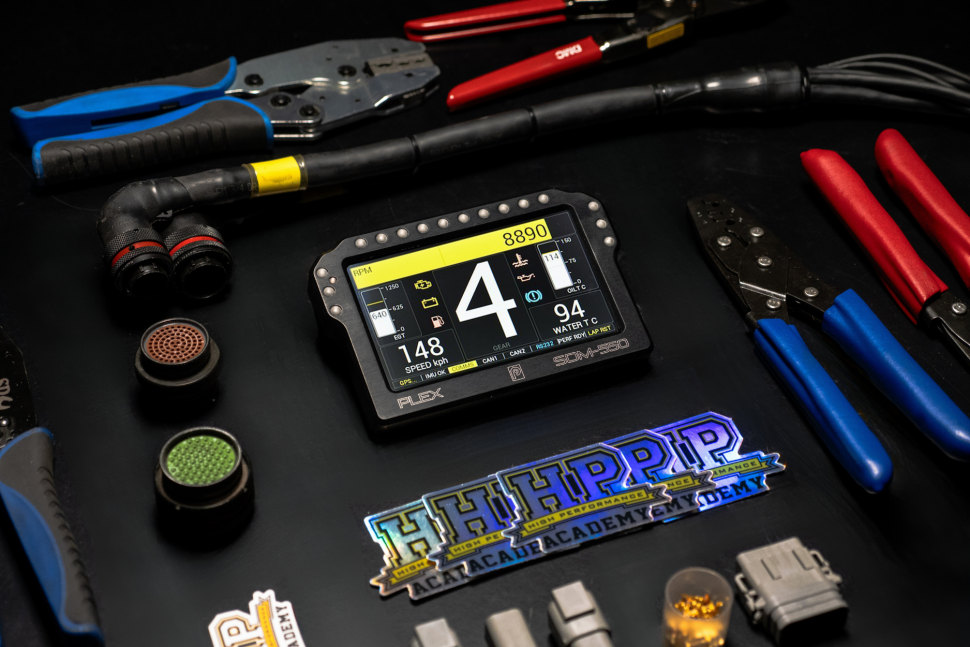| 00:00 |
- Installing a flex fuel sensor in your car is relatively straightforward, however there are a couple of considerations you will need to keep in mind.
|
| 00:08 |
Obviously the sensor needs to be located somewhere in the fuel system where it can sample the fuel that the injectors are receiving.
|
| 00:16 |
And these sensors are a pass through type where the fuel flow will enter one side of the sensor and exit the other.
|
| 00:23 |
The sensors are designed for a stock OE application and hence the diameter of the connections is sized to suit the flow requirements of a stock factory fuel system.
|
| 00:34 |
The inlet and outlet tubes for the common Continental sensor that's most frequently used in the aftermarket are 3/8 of an inch or 9.5 millimeter.
|
| 00:44 |
Continental rate this sensor to support 400 litres per hour of fuel flow, which should support somewhere in the region of 800 horsepower or 600 kilowatts on an E85 blend.
|
| 00:56 |
In many instances this won't be an issue.
|
| 00:59 |
However if your target power level exceeds this, then the sensor may pose a restriction to flow.
|
| 01:05 |
There are a couple of ways of dealing with this.
|
| 01:08 |
The first is to fit the sensor on the fuel return line from the regulator.
|
| 01:13 |
This is the most commonly recommended mounting option regardless of engine power provided you're dealing with an engine that runs a vacuum referenced fuel pressure regulator fitted to the engine bay, with a return line back to the fuel tank.
|
| 01:28 |
If you want to fit the sensor on the fuel feed line to the engine rather than the return line, you can choose to split the fuel line into two and run it through the fuel composition sensor as well as directly to the engine in parallel.
|
| 01:42 |
This provides two paths for the fuel to flow through and eliminates the chances of the sensor restricting flow.
|
| 01:49 |
This would be a requirement if you're installing the sensor on an engine that uses a returnless style fuel system where there is no fuel return line.
|
| 01:59 |
In reality this is seldom a requirement since most stock returnless fuel systems end up being converted to a conventinal return style fuel system with a manifold pressure referenced regulator when an engine is modified to the level where the fuel composition sensor is likely to produce a restriction to fuel flow.
|
| 02:19 |
One of the myths concerning flex fuel is that the sensors are not designed to cope with pressure or that the sensor accuracy will be affected by high fuel pressure and hence they can't be fitted to the fuel feed line.
|
| 02:33 |
There's no truth to this and we only need to look at how these sensors are used in a factory application and typically this will be in a returnless fuel system where the sensor may see four bar of fuel pressure or more.
|
| 02:47 |
The actual specifications from Continental suggest that the sensor is capable of operating at up to 10 bar or 145 psi which won't be an issue for most applications.
|
| 03:00 |
Assuming that you're operating below the power level where the sensor can pose a restriction, fitting the sensor to the fuel feed line actually does offer some potential advantages when compared to fitting the sensor to the return line and it's worth discussing why.
|
| 03:17 |
An important point to understand is that for reliable and consistent ethanol readings, the sensor must see a constant flow of fuel through it.
|
| 03:27 |
If we place the sensor on the return line then this can present a problem if we're nearing the limit of the fuel pump's flow capability.
|
| 03:35 |
If we get to this point we may still have good fuel pressure but the amount of fuel flowing through the return line can reduce to a trickle which results in erratic readings from the sensor.
|
| 03:46 |
The worst part about this is that it's likely to happen under high load and RPM right where a potential lean air fuel ratio could be the most dangerous.
|
| 03:57 |
While many tuners choose to fit the sensor to the feed line to eliminate this possibility, I'm of the opinion that if the fuel system is sized correctly then you should have adequate flow on the return line at all times, and hence this shouldn't be an issue.
|
| 04:13 |
If you're seeing erratic ethanol readings under high load and RPM, it's really a sign that the fuel system is marginal for your application.
|
| 04:21 |
Any time we're dealing with the fuel system, it's important to take precautions to ensure the reliability of the connections.
|
| 04:29 |
It should go without saying that a fuel leak can result in catastrophic damage, so if you aren't confident with this sort of work then it's best to leave it to a professional workshop.
|
| 04:40 |
The fuel composition sensor is designed to work with factory style fuel lines that clip on and locate over the hump on the inlet and outlet tubes.
|
| 04:49 |
This provides positive location and means there's no way that the fuel line can come off.
|
| 04:55 |
In the aftermarket adaptors are available that allow us to easily convert to motorsport grade AN fittings, which is my preferred method of adapting these sensors to the existing fuel system.
|





